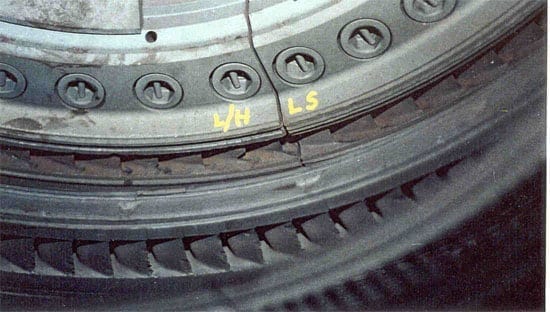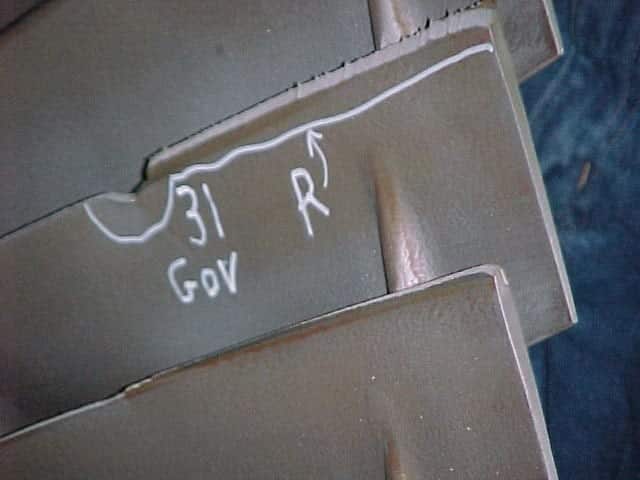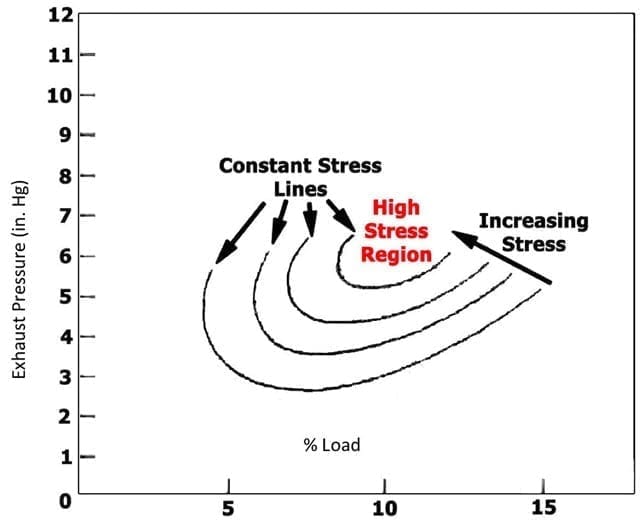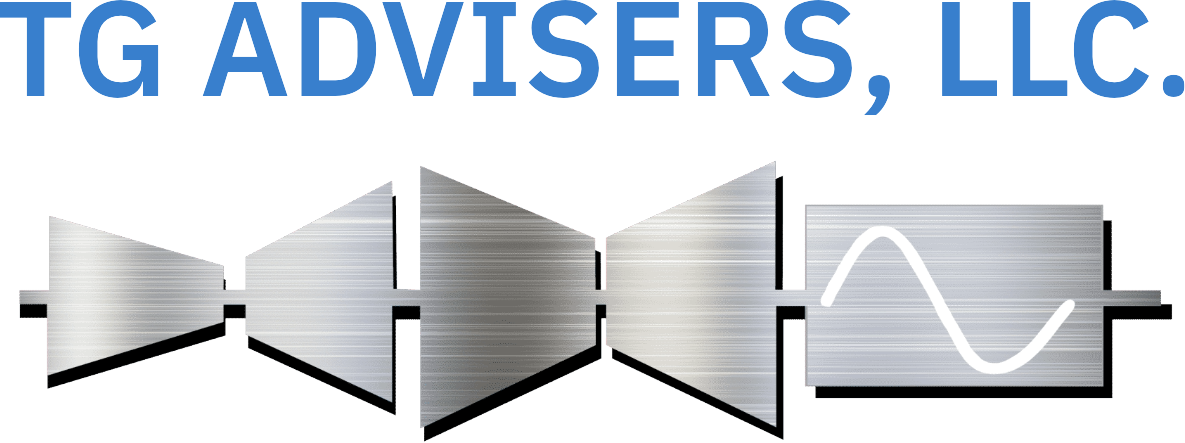Steam Turbine and Generator Reduced Minimum Load Considerations
Background
Reducing the minimum load at which a unit can reliably operate is one method to increase revenue potential during lower demand periods. For this reason, it is not unusual to see merchant plants operating at super minimum load levels well below 25% rated full load. However, these units are operating well outside the original OEM design basis. It is important for owners to understand the trade-offs and risks that come with such operation. The following is an overview of the main steam turbine generator issues that should be considered as part of a decision to reduce unit minimum load.

Higher Nozzle and Valve Erosion Rates
Nozzle Vane Damage due to Solid Particle ErosionAt super minimum loads, particles exfoliating from the boiler are throttled at much higher velocities through the inlet valves and, on units with partial arc admission, nozzle blocks. As a result, these components experience a greater rate of erosion and may require more frequent maintenance.
One possible impact is nozzle vane erosion and chipping as shown in the accompanying photo.
Treating the vanes with an erosion resistant coating can mitigate nozzle block wear. A more permanent solution is to convert to sliding pressure operation. This approach also benefits heat rate by reducing thermodynamic losses due to throttling.
HP-IP Rotor Vibration
Units with partial arc admission where the lower arc valves open first are more susceptible to increased vibration at reduced minimum loads. This is due to unbalanced upward pressure forces that tend to lift the rotor and partially unload the HP-IP bearings.
Older units employing plain journal bearings may experience oil whip and related vibration at reduced bearing loads. Assuming proper supervisory instrumentation exists, a load test can determine if this is a concern. Proper bearing clearances and preloads may be sufficient to overcome this concern. The operator can perform a load test and perform bearing adjustments at the next outage to determine if minimum load can be reliably reduced.
If adjustments to the bearings alone do not address oil whip concerns, the operator has two options: change the admission sequence such that the cover valves open first or retrofit the unit with tilt-pad bearings. Changing valve sequence can be problematic since bearing overload may result with reversed pressure loads. A tilt pad retrofit to maintain stability and acceptable bearing vibration level is often the best option.
Modern units generally already employ tilt pad bearings. However, even with tilt-pads, maintaining correct clearances and preloads is important to ensure sufficient damping. Adding tilt pad bearing preloads normally addresses damping and subsynchronous stability concerns.
Higher Water Droplet Erosion
Blade Damage due to Water Droplet ErosionBoiler temperature droop at lower loads typically occurs in both reheat and main steam conditions. Lower steam temperatures will increase moisture levels and also move the saturation line further upstream (near Wilson Line) of the last stages of the Low Pressure Turbine. At the Wilson line, chlorides become concentrated and stress corrosion concerns are elevated.
Impingement of droplets on rotating blades leads to accelerated damage of installed erosion shields and blade surfaces as shown in the photo on the right. If erosion damage is not eventually addressed, blade failure may result.
Running a test to optimize boiler operation and efficiency at minimum load is an important part of the assessment. Moving boiler tilts positive and frequent sootblowing can enhance temperature at these low loads. Sliding pressure may also support lower moisture levels if this capability exists.

Casing and Rotor Low Cycle Fatigue Cracking
During low load periods, boiler droop will cause temperatures to drop from nominal design conditions. This increases the fatigue effect of load swings from minimum to full load. Typically the effect is minor but depending on the amount of cycling can add up to impact casing and rotor cracking. Typical locations for LCF cracking include diaphragm ledges, steam chest bridges, and ligaments between bolt holes. During a major outage, complete NDE should be done in these areas and any detected cracks charted for length. In subsequent outages, the same should be repeated to determine rate of propagation to support future repair decisions.

Last Stage Blade Stall Flutter Vibration
Stall Flutter DiagramLP last stage blade stall flutter potential is greatest during conditions of low flow and high back-pressure. Stall flutter occurs when flow separation at the base of the blade forces steam flow towards the tip. This can produce blade stall flutter vibrations and buffeting caused by flow instabilities. Longer blades with lower first mode frequencies are more susceptible then shorter blades.
The figure illustrates the conditions of high stress that can occur due to stall and blade buffeting vibration (note this figure is not intended for design; these curves vary by last stage blade design). Plots such as these are derived from strain gage data since blade vibrations cannot be detected by traditional bearing vibration detection systems. In many regions of the country, there are plants that have load limitations during summer periods because of higher then acceptable back pressures due to inadequate condenser cooling. Unless this issue is addressed, low minimum load during high back pressure conditions (typically over 4.5 inches hg) should be avoided. Good operating practices such as frequent condenser tube and tube sheet cleaning can help provide additional margin at minimum loads.
Other Potential Impacts
Heating of Exhaust Hood and Operation of Sprays
At low loads, significant flow losses on the last stage blades results in higher heating (see stall flutter discussion). Generally hood temperatures are not problematic at super minimum loads but they should be monitored and spray capabilities verified before testing.
Generator Heating
Its important to ensure operation is still within the generator capability curve and to monitor stator slot RTDs, Hydrogen gas temperatures and generator rotor vibration.
Differential Expansion
Exhaust heating at reduced loads may result in additional differential expansion between stationary and rotating parts. This condition should be carefully monitored during initial low load testing and trended as a function of load and time.
Thrust Temperature
Although unlikely, thrust unbalances may develop. Temperature monitoring is a way to assess this risk.

